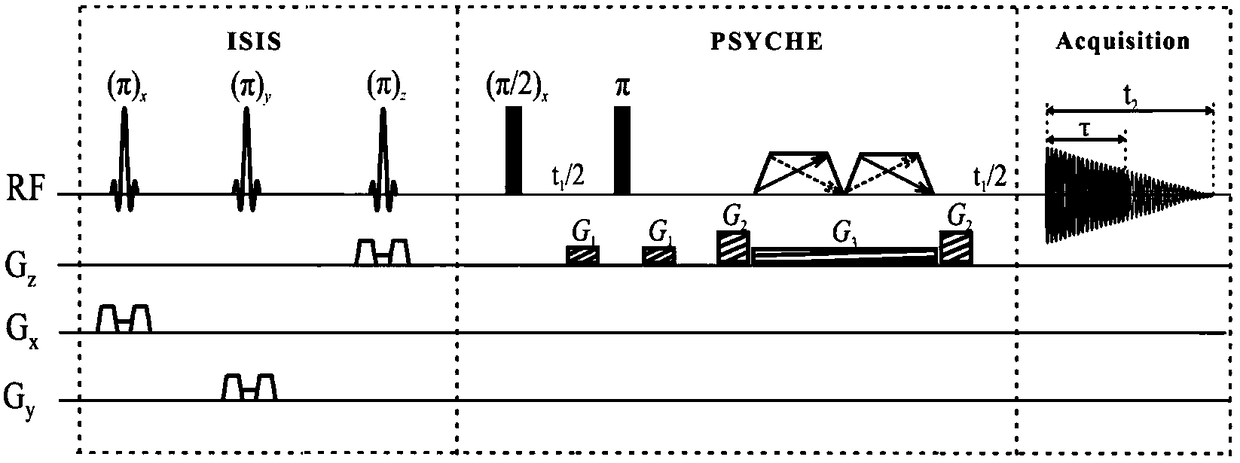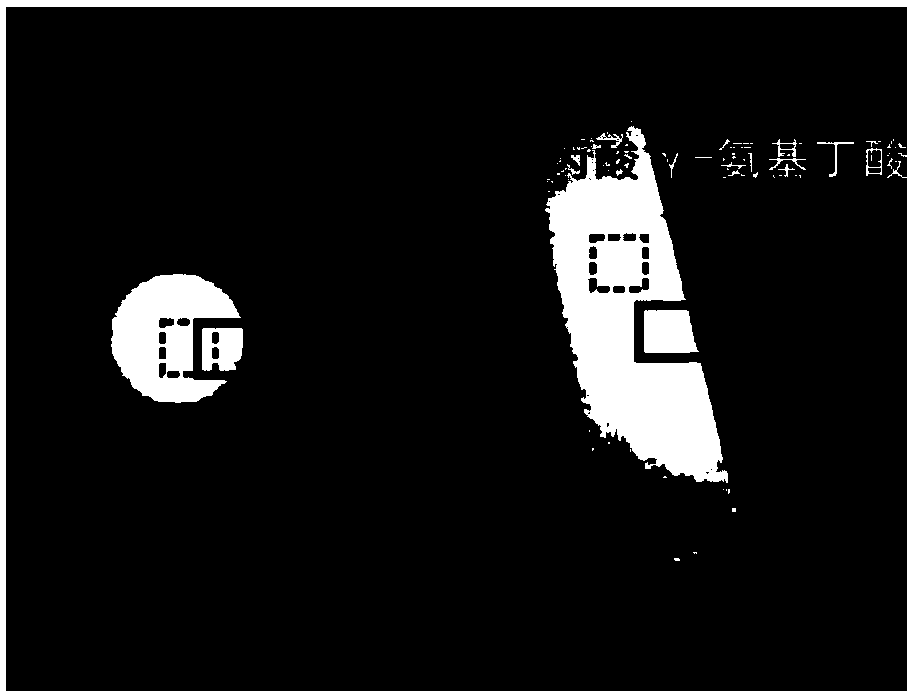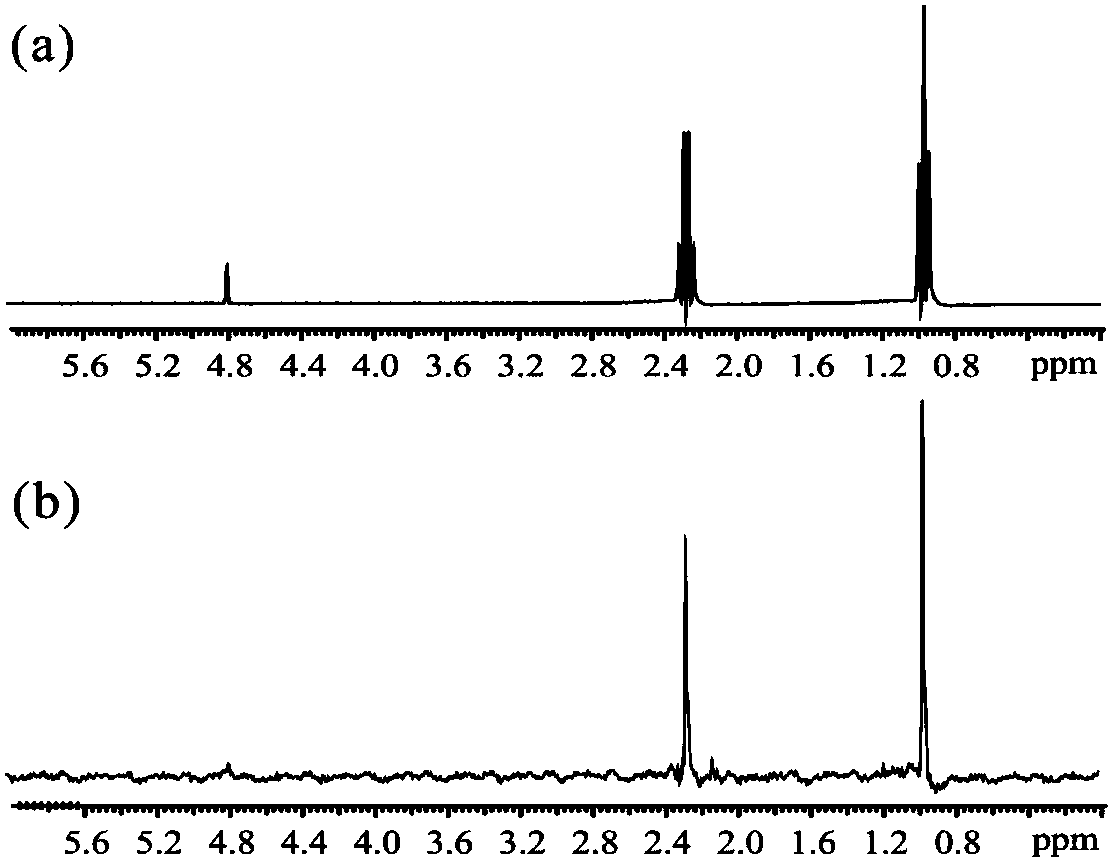Detection method of MRI (magnetic resonance imaging) homonuclear decoupling one-dimensional phase-sensitive localized spectrum
A nuclear magnetic resonance and detection method technology, applied in the direction of nuclear magnetic resonance analysis, etc., can solve the problems of reduced sensitivity, inability to accurately assign spectral peak signals, and difficulty in MRS detection of metabolites
- Summary
- Abstract
- Description
- Claims
- Application Information
AI Technical Summary
Problems solved by technology
Method used
Image
Examples
Embodiment Construction
[0027] In order to make the purpose, technical solutions and advantages of the embodiments of the present invention clearer, the following examples are used to further describe the embodiments of the present invention in detail:
[0028] The sample used in this embodiment is a γ-aminobutyric acid and propionic acid solution casing sample with a concentration of 1mol / L, and the instrument used is a Varian 7T small animal imager equipped with an XYZ three-dimensional gradient field. The pulse used in the entire experiment sequence such as figure 1 shown. Other operation steps are as follows:
[0029] 1) Put the γ-aminobutyric acid and propionic acid solution casing samples to be tested into the detection cavity of the magnetic resonance imager;
[0030] 2) Adjust the position of the sample in the detection cavity so that the sample to be detected is in the center of the detection cavity of the magnetic resonance imaging instrument, and then perform shimming, tuning, and power-...
PUM
 Login to View More
Login to View More Abstract
Description
Claims
Application Information
 Login to View More
Login to View More - Generate Ideas
- Intellectual Property
- Life Sciences
- Materials
- Tech Scout
- Unparalleled Data Quality
- Higher Quality Content
- 60% Fewer Hallucinations
Browse by: Latest US Patents, China's latest patents, Technical Efficacy Thesaurus, Application Domain, Technology Topic, Popular Technical Reports.
© 2025 PatSnap. All rights reserved.Legal|Privacy policy|Modern Slavery Act Transparency Statement|Sitemap|About US| Contact US: help@patsnap.com



